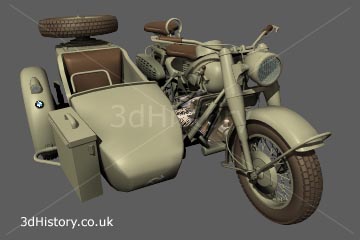The Second World War - North Africa - World War Two - War Machines
North Africa
North Africa and the Mediterranean were of vital importance to the Allies because of the Suez canal in Egypt.
The Suez canal allowed ships to take a relatively short and safe route from the Indian Ocean to the Mediterranean Sea. This was a critical route between Great Britain and the middle east oilfields. Without it ships would have to travel all the way around the African continent adding weeks to the journey, creating a serious fuel shortage in Britain.
During September 1940 Mussolini ordered the 10th army based in Libya to invade Egypt and secure the Suez canal for Italy. This was the start of a series of campaigns involving British, American, Italian, German and French forces that would see territories change hands several times until May 1943, when the Axis troops were finally forced out of Africa.
The Italian army was ill prepared to fight a modern mechanised war. The majority of their armoured formations were equipped with outdated vehicles that were under gunned, slow and thinly armoured.
There were insufficient support vehicles to provide supplies to the advancing army and this kept it hugging the coast road, which exposed it to a flanking counter attack.

The Italian L3/35 tanketts was based on the British Carden Lloyd tankette designed in the late 1920's. By 1940 the vehicle was virtually useless against other armoured fighting vehicles of its day and was totally unsuitable for front line duty. Even so it comprised a significant part of the Italian armoured formations when they invaded Egypt.
The eventual British counter-attack resulted in the surrender of over 130,000 Italians and the loss of most of Libya.
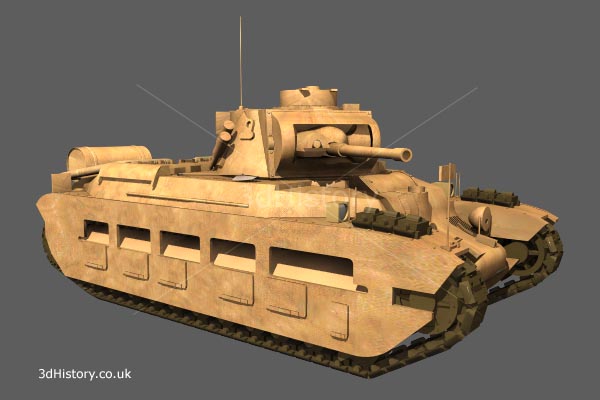
Due to its thick armour the Matilda II was virtually invulnerable to Italian antitank weapons. It's slow speed and small main gun however meant that it couldn't match German tanks and it was later replaced by faster and better armed vehicles such as the Valentine, Lee/Grant and Sherman.
The deserts of North Africa were ideal for a mobile war. Vast open spaces and few urban areas allowed mechanised forces to manoeuvre without being constrained too much by geography.
Small independent detachments, such as the British Long Range Desert Group and Special Air Service, operated deep in the desert to gather intelligence and disrupt enemy supply routes.
|
The Chevrolet 1533X2 30 cwt 4 x 2 Truck was capable of hauling around 1.5 tonnes. They were equipped with special tyres, sand channels and sand mats to enable them to negotiate soft terrain. The radiator grills were removed to help keep the engine cool in the hot desert. |
|
The Germans were not prepared to sit and watch the opportunity of taking the Suez canal slip away and duly committed an armoured force, the Afrika Korps, under Erwin Rommel, the famous "Desert Fox".
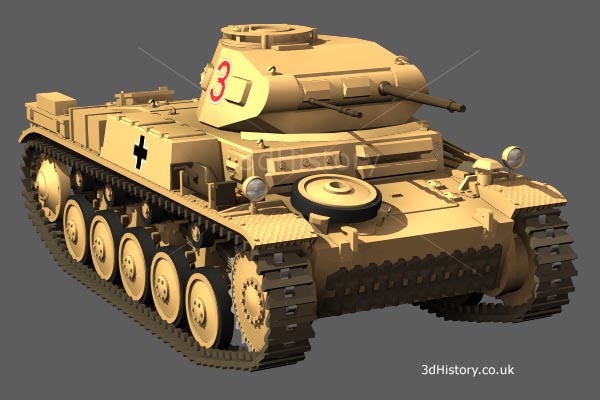
The Panzer II was intended as a stopgap until production of the Panzer III could get underway. Nevertheless it played an important part in the German campaigns up until around 1942. It was armed with a 20 mm main gun, which was useless against most contemporary allied armour. It could achieve 26 km/h off road and that, with a relatively low fuel consumption, made it very useful in the mobile desert war.
|
|
The BMW R75 motorcycle combination was produced from 1941 in response to a specification for an off-road capable motorcycle. The sidecar wheel was driven from the rear traction wheel of the motorcycle and there was even a reverse gear, giving it a very good performance on sand and muddy terrain. Maximum speed was around 95 km/h and it was optionally armed with one MG34 machine gun mounted on the side car. |
The British, on over extended supply lines and short of troops and equipment, that had been transferred to Greece, fell back. On November 5th 1942 the Battle of Alamein combined with allied landings in Morocco forced the Germans to retreat. On May 13th 1943 the Axis forces in Africa surrendered.
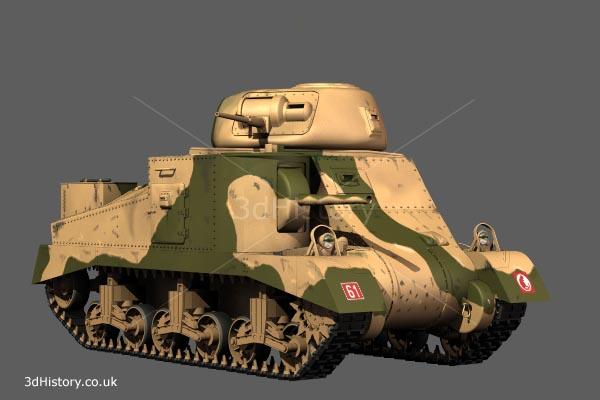
The M3 (Lee/Grant) medium tank was an American design that was rushed through and adopted by the British because of an urgent need for heavy firepower on the battlefield. Its main 75 mm gun was mounted in the hull with a smaller 37 mm gun in the turret. It was a tall tank with a large silhouette and the hull mounted gun meant it couldn't adopt a hull down firing position. M3's were replaced by M4 Sherman's as soon as they became available
Italy signed an armistice with the allies during September 1943. By this time allied troops were on the Italian mainland. German troops responded quickly by disarming Italian forces and pressing their equipment into service with German units.
The battle for Italy continued until shortly before the German surrender in 1945.
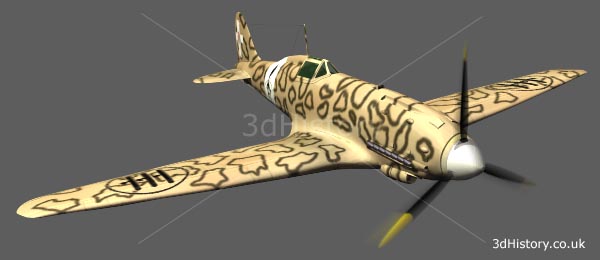
The Macchi C205 was a modern aircraft built around the German Daimler -Benz DB605 V12 engine. It was well respected by allied pilots and some served with the German Luftwaffe when Italy left the war in 1943.


